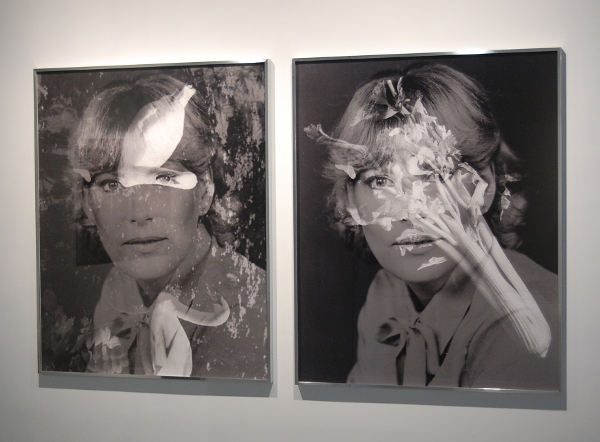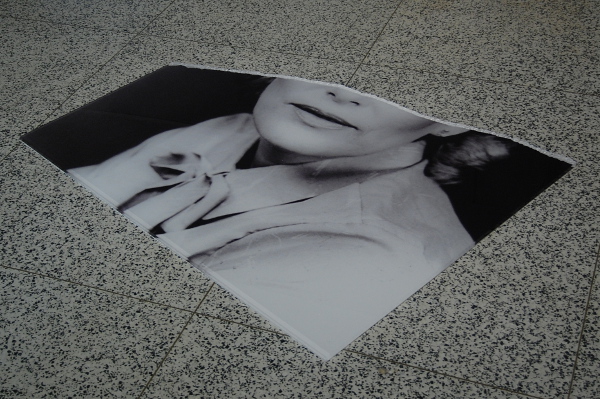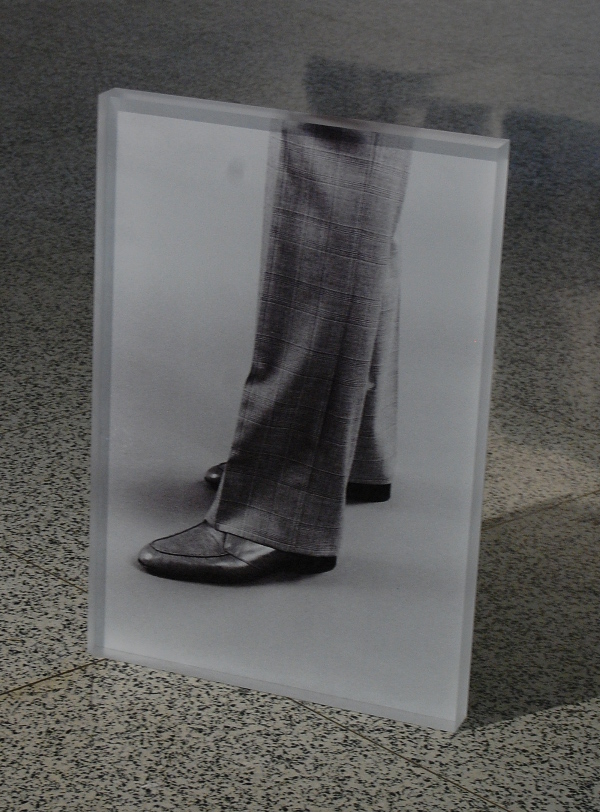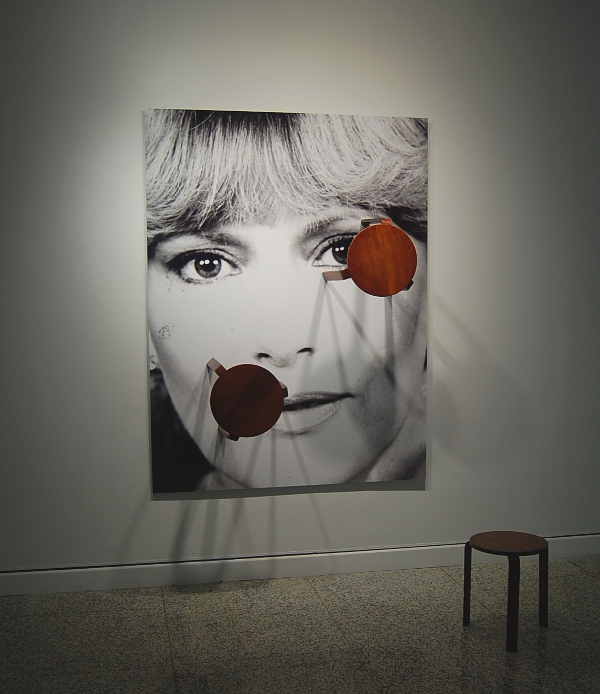
Marlo Pascual bridges the gap between image and object at Moore
The Galleries at Moore College of Art & Design are highlighting the work of the boundary-breaking artist Marlo Pascual. Through found photos, physical constructions, and layered images, Pascual takes us on a heady jaunt through the human mind and through the detritus of the abandoned meanings that abound in the media-laden, culture-driven world around us.
Pascual’s installations and sculptures at first appear as photographs, although it quickly becomes clear that this definition is severely lacking in its ability to contextualize her work. Sure, the starting point in most of her untitled work is a striking black and white image, but these pictures are just as much objects as anything else.
Some pieces in the show cling to the canon of photographic display, hanging as series’ of two-dimensional, framed prints on the Goldie Paley Gallery’s walls. Nearly every photo includes the same head shot of a light-haired woman in business attire, unsmilingly staring directly at the viewer. Where this portrait came from, and what purpose it originally served, becomes lost in the mire of time, but Pascual forces our attention on it regardless. Across this anonymous face, she adds ethereal layers of cobwebs, plants, body parts and furniture, extending the breadth of this otherwise straightforward image’s possibilities.
At a time when appropriation, internet memes and remixes rule, these disparate shots atop one another barely make us bat an eye… but they do start the gears of association turning. With a cobweb crisscrossing her face, the figure becomes aghast and witch-like. With a stalk of celery, the woman depicted seems highly intrigued by the state of her health. The implications change with the artist’s directional whim, but that is still hardly scratching the surface, since the picture is merely a starting point for Pascual.
Marlo Pascual, “Untitled.”
Like a memory torn apart in anger, one half of the otherwise unadulterated photo lies on the floor as if discarded by a scorned lover. Here is the true transition whereby picture-as-image becomes picture-as-object. Instead of a wallet-sized memento, this severed representation is enormous – easily over three feet in length – and it’s sheer size alone makes the glass covered image more like the tiles it rests on than a picture to be framed. Elsewhere, a bare hand and a well-dressed pair of lower legs stand like tiny monuments encased in such thick blocks of transparent material that they stand on end, one reaching skyward and the other standing confidently, if immobile.
Marlo Pascual, “Untitled.”
Easily one of the exhibit’s highlights is the sculptural piece occupying a wall all by itself. Here, the woman’s face, which we see throughout the show, is enlarged and practically everything outside of her facial features is cropped out. As a nod to the photo’s origin as found art, a pair of wooden tables stand firmly against the vertical image, partly obscuring it while performing a gravity-defying feat as they protrude from the wall. Another stands on the ground, its three legs reminiscent of a tripod, while the others remain eerily perpendicular, further invoking (and twisting) the medium of photography.
Marlo Pascual, “Untitled.”
Marlo Pascual’s solo exhibit at Moore manages to say a great deal with a very limited selection of images and materials. With a show that is essentially photographic but steeped in the style and sly disregard of Duchamp, this artist explores the cultures of physical structure and representational art while avoiding the pitfalls of excessive analysis or oversimplification. Pascual’s artwork will be on display through October 19.
Moore College of Art & Design is located at 20th Street and the Benjamin Franklin Parkway, Philadelphia; 215-965-4027; moore.edu/the-galleries-at-moore.
Recent Content
-
Artsarticle ·
-
Artsarticle ·
-
Artsarticle ·




